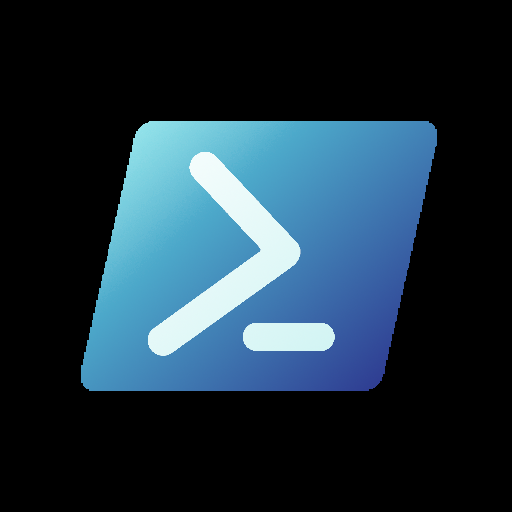pwshguy (mdowst)
Father, author, blogger, enthusiast of all things PowerShell and automation. http://linktr.ee/mdowst
- 76 Posts
- 28 Comments

 1·14 days ago
1·14 days agoJust looking at it from the point of view of making the script more portable and easier for someone else to run, there are a few things I would address.
The first is the
Write-Hostcommands all over the script. I would recommend converting those toWrite-Verbose. Here is a great explanation when to useWrite-Hostvs other outputs.There are also numerous
Write-Outputcommands in the script. Anything sent to theWrite-Outputwill be returned to the calling console. If you need to take additional actions based on the results of this script, this could cause issues. You can run into problems with theNew-Itemcommands in there too, as they will produce output. You might consider saving them to a variable or piping toOut-Null.Also, there is no need to call exit and set an exit code in the way you are. If you want to write and error but have the script continue you can use,
Write-Error. If you want the processing to terminate then usethrow. Doing it this way will allow PowerShell’s built-in error handling to take care of the exit codes. It will also give you greater flexibility with using Error Action Preferences and using try/catch statements.Finally, you have a path hardcoded for the workingDir. I would suggest making this a parameter or using an environment variable as this will make it more portable. Also, when creating the log variable, you will want to use the Join-Path cmdlet instead of just joining strings.

 1·3 months ago
1·3 months agoCommunity
- Kubernetes is Easy with Anthony Nocentino
In this episode of the PowerShell Podcast, we sit down with Anthony Nocentino, a Senior Principal Field Solution Architect at Pure Storage, to dive deep into the world of Kubernetes. Anthony breaks down what Kubernetes is and how it fits into the modern IT landscape. We explore his fascinating career journey, from consulting and SQL Server to educating the masses on Kubernetes and Linux. Anthony also shares invaluable insights on becoming a force multiplier in your career and the critical role of mentorship and offers sage advice for anyone looking to elevate their professional path. - PSSaturday Karlsuhe Call for Speakers
We are excited to announce that we are looking for speakers for the upcoming PSSaturday in Germany this November! Whether you’re a first-time speaker or an experienced presenter, we welcome you to share your ideas. If you have an interesting topic and are willing to speak for up to 45 minutes, we want to hear from you.
- Kubernetes is Easy with Anthony Nocentino

 1·3 months ago
1·3 months agoProjects, Scripts, and Modules
- PowerShell - IntelliJ IDEs Plugin
Provides PowerShell code completion and script execution support for IntelliJ IDEs.
Books, Media, and Learning Resources
- Build a Superfast Research Assistant using PowerShell and AI
In this episode, I’ll show you how to combine PowerShell with AI to automate tasks, chat with your data, and build intelligent agents—all within your console and scripts. - Interactive Data at Your Fingertips: PowerShell AI Converts Data to Interactive HTML
Transform your data with PowerShell and AI. In this video, Doug Finke, a 15x Microsoft MVP, shows how to use the PSAI module to convert Excel and CSV files into interactive HTML pages. You’ll learn how to sort and interact with your data directly in your browser using the newConvertTo-InteractiveHTMLfunction. Doug walks through generating HTML tables with sortable columns and customizing them using AI. Whether you’re managing large datasets or need a quick way to visualize your data, this tutorial will guide you through the process. Install the PSAI module and start making your data more dynamic. - How To PowerShell Code in Docker Containers
In this video, we guide you through the process of installing and running Docker using PowerShell on Windows. Whether you’re a beginner or an experienced developer, this step-by-step tutorial will help you get Docker up and running quickly and efficiently.
- PowerShell - IntelliJ IDEs Plugin

 10·4 months ago
10·4 months agoI remember before scrambling they just put blocks that prevented you from going to certain channels. I somehow figured out if you ran the cable box through the VCR first and put it on channel 2 while the TV was still on 3, it would shift all the channels down one. Cinemax was channel 14, which our box just would not go to. But it would go to 13, so doing my little trick teenage me got to watch a lot of skinamax.

 2·4 months ago
2·4 months agoIt took me longer than I would have liked, but I did finally get the next video uploaded. I hope you enjoy it as well.

 1·4 months ago
1·4 months agoProjects, Scripts, and Modules
- 365AutomatedLab and new companion module coming soon
365AutomatedLab and new companion module coming soon I promise I haven’t forgotten about 365AutomatedLab, but I’ll be honest after Microsoft made the announcement of no more new Dev tenants it hurt a bit as I know how useful they are on learning and testing features and PowerShell without hurting your production environment. - How to Create SharePoint List & Add Columns Using PnP PowerShell?
Recently, I developed one Power Apps application that needed a SharePoint list data source. Before running the application, the client must create the specific SharePoint list on their site. So, I wrote a Power Shell script to create the SharePoint list along columns to avoid mistakes when creating it manually. - PowerShell-Yayaml v0.5.0
What’s changed… - PSDates v1.0.4
Tons of new stuff added including calculating sunrise and sunset time.
Books, Media, and Learning Resources
- PowerShell Conference EU 2024 - Full playlist
Check out all the sessions from this years PowerShell Conference EU.
Community
- Behind the Scenes at PSConf.EU: Harm Veenstra’s Experience and Insights
In this episode of the PowerShell Podcast, we sit down with Microsoft MVP Harm Veenstra to discuss his exciting experiences at PSConf.EU, where he attended for the first time and embarked on a new journey into public speaking. Harm shares his thoughts on receiving the prestigious Microsoft MVP award and delves into his recent projects, including creating a TCP/UDP listener for testing firewall ports and using a Pi-hole to block ads on his home network. We also explore his perspectives on automation in the MSP world, the power of Microsoft Graph, and why he hasn’t yet adopted AI tools. Tune in for an engaging conversation filled with insights, tips, and highlights from PSConf.EU! - Write Code, Write Blogs: Lessons with Brock Bingham
In our latest Powershell Podcast episode, we chat with Brock Bingham. We explore his transition from sysadmin to writer and his viewpoint of coding as creative problem-solving. Brock also shares insightful blogging tips and advises against the pitfalls of comparison. A must-listen for aspiring PowerShellers. (plz create a blog and share your learnings for future you)
- 365AutomatedLab and new companion module coming soon

 3·5 months ago
3·5 months agoNice write up, and a great primer for someone coming from the Linux/Bash world.

 1·5 months ago
1·5 months agoThanks! I’d love to hear your thoughts once you’ve watched it.

 2·5 months ago
2·5 months agoCommunity
- PipeScript, Formatting, and Docker: An In-Depth Conversation with James Brundage
In this episode of the PowerShell Podcast, we are joined by Microsoft MVP, former PowerShell team member, and module maker extraordinaire James Brundage. We hear about his experience at Microsoft Build, learn all docker and kubernetes while discussing his Rocker module, UserGroup updates, implicit interpretation in Pipescript, formatting and types, and so much more. Strap in because we go deep in this one. - Breaking Down ModuleFast and More with Justin Grote
In this episode of the PowerShell Podcast, host Andrew Pla interviews Microsoft MVP and PowerShell aficionado Justin Grote. They delve into an issue in the Az.Accounts 3.0.0 module, with Justin offering insights and a workaround (use an earlier version of the module). Justin also discusses his innovative ModuleFast project, explaining its architecture and his approach to writing PowerShell scripts and modules. The conversation highlights Justin’s passion for APIs and celebrates his contributions as an official PowerShell project contributor. Listeners get a glimpse into Justin’s workflow working at a Managed Service Provider (MSP) and how he writes to much PowerShell. He offers valuable advice for those early in their careers. Additionally, Justin shares updates on his PowerHTML (1.2m downloads) project, which originated from a GitHub pull request, showcasing his continuous contributions to the PowerShell community. - PowerShell Community Call - May 16th, 2024
Last month’s community call with the PowerShell team.
- PipeScript, Formatting, and Docker: An In-Depth Conversation with James Brundage

 2·5 months ago
2·5 months agoBooks, Media, and Learning Resources
- PowerShell Scripting and Toolmaking
At long last I’ve updated the content of the PowerShell Scripting and Toolmaking book from Leanpub. Get the book and you get future updates for free. - Mastering PowerShell Scripting - Fifth Edition
Automate repetitive tasks and simplify complex administrative tasks using PowerShell - Send Emails with SendGrid and PowerShell [OC]
Learn how you can quickly and easily send emails from PowerShell with SendGrid. - Customize your Windows Sandbox with PowerShell
Today we’re going to go a bit deeper into Windows Sandbox by walking through custom configurations with PowerShell. - Automate Network Security Testing using PSTcpIp with Anthony Guimelli
Join Tony Guimelli for look at how you can automate the arduous process of network security testing using PowerShell and the PSTcpIp module.
- PowerShell Scripting and Toolmaking

 2·5 months ago
2·5 months agoProjects, Scripts, and Modules
- passwordstate-management v 4.4.49
Powershell Module for managing Password State - PowerQualys v 0.3.0
Helper module for Qualys - WinTuner v 0.8.9
Package and publish any apps from WinGet to Intune. - Interpreting Audit Records for Teams Meeting Recordings (Again)
Three years ago, I wrote a script to analyze the audit records generated for Teams meeting recordings. Then things changed in terms of how the audit records were generated and how the Search-UnifiedAuditLog cmdlet returns audit search results. All of which meant that considerable work was needed to revamp (rewrite) the script. Maybe you need to check any script that uses the Search-UnifiedAuditLog cmdlet too? - tiPS v 1.3.10
PowerShell tips delivered straight to your terminal.
- passwordstate-management v 4.4.49

 1·6 months ago
1·6 months agoThanks! I’m glad to hear you are finding it useful.

 2·6 months ago
2·6 months agoThanks! I’m glad to hear others are finding it useful.

 1·7 months ago
1·7 months agoIf I understand correctly, the signatures generated by PuTTY aren’t perfectly random, so if someone got a hold of a bunch of keys from a server, they could figure out the pattern. It takes about 60 keys. This affects not just PuTTY, but also FileZilla, WinSCP, TortoiseGit, and TortoiseSVN.
In other words if you have NIST P-521 keys, or any others using 521-bit ECDSA, you should revoke them and generate new key pairs. After you update your software.

 4·1 year ago
4·1 year agoFor some reason their API would not return anything for assembly. I was curious to see where it would rank too,

 7·1 year ago
7·1 year agoApparently it due to an issue with Kotlin - https://github.com/code-golf/code-golf/issues/151#issuecomment-1126266250
Biggest things I’m seeing is CVE-2023-21709 for Exchange requires a PowerShell script to be run after patching. Also, CVE-2023-29328/29330 for Teams affect all devices (Windows, Mac, iOS, and Android).

 3·1 year ago
3·1 year agoThe book I wrote. When I first talked with the publisher he asked, “what skills would you look for in someone who wants to do your job?” And that’s the premise I stuck with writing it.

 1·1 year ago
1·1 year agoI feel down a rabbit hole, a few years ago wonder the same thing about C#. Here is what I found.
- C# was developed in 2000 as a successor to C++. Doubling the ++ to a #.
- C++ was developed in the early 80s as a successor to C. Adding plus (+) to a name was a common way of indicating it was an enhancement. Also ++ is the incrementing operator for C.
- C was developed in the early 70s as a successor to the B programming language. C comes after B.
- B was developed in 1969 and was derived from the BCPL language. Basically, B was a stripped down version of BCPL.
- BCPL (Basic Combined Programming Language) was developed in 1967 and was a designed as an simpler version of CPL.
- CPL (Combined Programming Language) was developed in the early 60s at Cambridge. The original name was “Cambridge Programming Language” but was changed to Combined when it was published jointly with the University of London.



No Azure DevOps automatically increments it every time you run the pipeline.